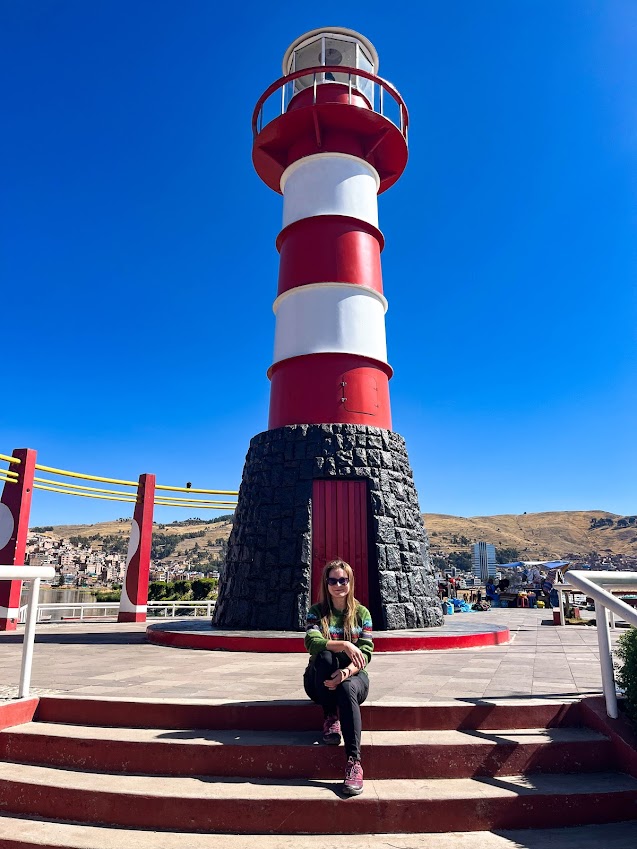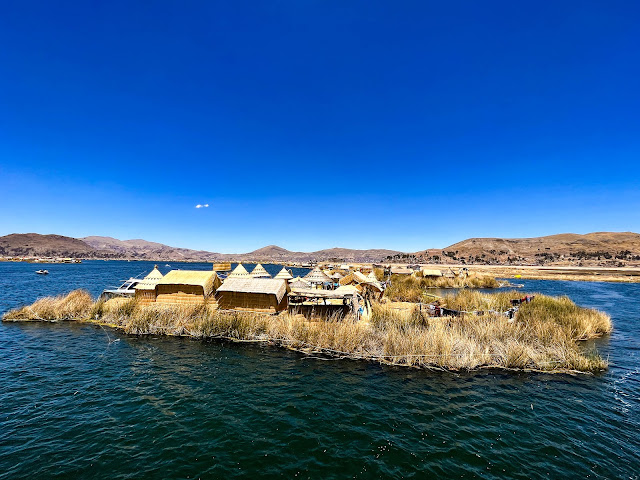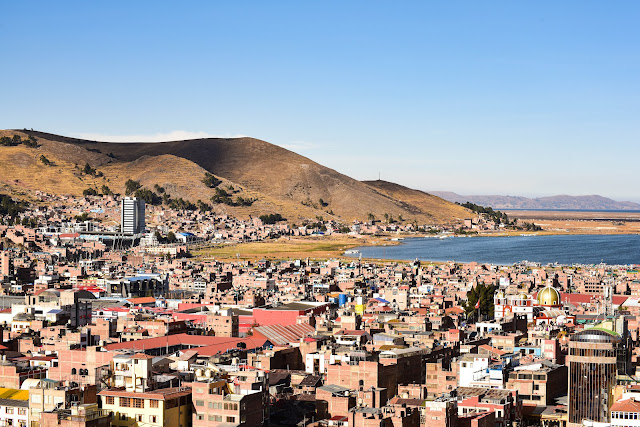Lake Titicaca
Having completed the Ausangate trek, we headed towards Lake Titicaca - the world's highest navigable lake, situated at an altitude of 3,812 meters above sea level. The lake straddles the border between Peru and Bolivia on the plateau and is the largest freshwater lake by volume in South America. From the Peruvian side, we stopped in the city of Puno to visit the famous floating islands of the Uros. On the Bolivian side, we visited the town of Copacabana to admire the lake's beauty from the sacred mountain Cerro Calvario...
Arriving in Puno around midday, we checked into a hostel and took some time to rest after the long bus rides. We also needed to do some laundry after the trek. In the evening, we went for a walk around the city and had dinner.
The next morning, we headed to the pier...
At nine in the morning, tourist boats depart from here to the floating islands of Uros... You can buy a ticket directly for one of them...
The tour lasts for over three hours, and the islands are located quite close to the pier...
We quickly sailed into the main channel along which the islands were spread out...
The islands are inhabited by the Uru people, an ancient ethnic group known since pre-Incan times. There are approximately 42 artificial islands constructed from totora reeds, which grow along the shores of the lake. Once, the floating islands served a defensive function, and in times of threat, they could change their location.
Along the lake and through the channel, tourist boats made from totora reeds navigate as part of the tour program to the floating islands...
Arriving at one of the islands, we disembarked onto the shore, where locals dressed in traditional attire were ready to tell us about the technology of creating the islands and their life on them... By the way, the island itself feels like it moves slightly underfoot...
Then they gave us the opportunity to take photos in traditional Uru attire... We also visited the totora reed houses where the islanders live...
On many islands, there are observation towers primarily built from totora reeds as well. It's interesting to climb them and view everything from above...
After finishing our tour of the floating island, we boarded a colorful two-story boat made of totora reeds. We sailed across the lake, passing by other floating islands...
Here was a restaurant where we could have lunch and climb an observation tower with a great view of the lake...
From there, a tour boat picked us up and took us back to the pier... Thus ended our tour of Lake Titicaca. Upon reaching the shore, we headed straight to a restaurant located on the lakeside to try the most famous dish of the region - fried trout, which was simply divine...
After lunch, we climbed up to the two main lookout points in Puno... From the viewpoint at Cerrito Huajsapata, there was a beautiful view of the city...
Also, there is a monument here dedicated to the founder of the Inca Empire - Manco Cápac...
The next lookout point was Mirador El Condor, located at an altitude of 3990 meters... Here, there is a monument dedicated to the Andean condor, revered as the guardian of the Andes...
From here, you can get a good view of the floating islands and the main channel that leads to them, where we spent the first half of the day...
Descending from the viewpoint, we walked to the main square of the town, adorned with the cathedral and cozy colorful buildings...
The next morning, we headed to Bolivia, to the town of Copacabana. It's only 140 kilometers from Puno. I had obtained my visa for Bolivia from the Bolivian consulate in Cusco before embarking on the Ausangate trek.
After crossing the border swiftly, we arrived in Copacabana. Checking into our room and leaving our backpacks behind, we climbed to the town's main landmark - the summit of Cerro Calvario.
From there, you can enjoy the best views of Lake Titicaca and the town itself...There is also a place where people light candles and make wishes...
Views of the city of Copacabana...
Upon descending, we went for a stroll around the city...
Cathedral...
The next day, we took a bus to the capital of Bolivia - La Paz, early in the morning... The road to the capital was full of mountain roads, which made the transfer quite interesting, besides, we sat on the second floor of the bus near the front window. We crossed the strait without even leaving the bus on a small ferry...





























































Comments
Post a Comment